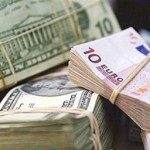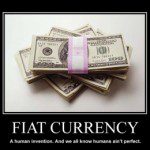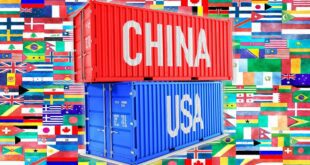Do you think the USD is still on top? What makes a currency strong isn’t necessarily what makes it popular or valuable, as you’re about to read.
valuable, as you’re about to read.
So says Ivan Widjaya (wealthnoob.com) in edited excerpts from his original article* entitled What is the Most Valuable Fiat Currency in the World Today?
[The following is presented by Lorimer Wilson, editor of www.munKNEE.com and may have been edited ([ ]), abridged (…) and/or reformatted (some sub-titles and bold/italics emphases) for the sake of clarity and brevity to ensure a fast and easy read. This paragraph must be included in any article re-posting to avoid copyright infringement.]
Widaya goes on to say in further edited excerpts:
A fiat…currency’s value, and more importantly, its strength, is determined by its capital assets (all government holdings) in comparison to its liabilities (all a country’s paper currency in circulation, and their outstanding debt/obligations added together). Let’s first look at the definition of a Capital Ratio using the K.I.S.S. principal.
Capital to Assets Ratio Explained
In order for a currency to be strong, the centralized bank which issues the currency (e.g., Federal Reserve in the U.S.) must have more, and in fact a substantial amount more, assets than it does liabilities. That’s it really. If you have more collateral than you do printed currency, debt, and other financial obligations, you have a positive Capital Ratio. The more positive (higher) the number, the stronger the currency.
To explain it just a bit further, we all use the Fiat system, and for the most part each dollar printed is nothing more than a piece of paper – a promise from the central bank that the assets which back the note do exist.
There is a certain level of expectation among all of us who possess each of those dollars that it will always hold some intrinsic value. A belief that we can buy a chocolate bar that costs $1 now, and that we can purchase that same chocolate bar (forget about inflation here for a second) in two years time.
Essentially, the Capital Ratio tells us what sort of cushion that currency reserve has in place in the event of a financial crisis. For instance: if a debt is called upon, or war erupts.
It should already be clear after learning how a central bank’s CR determines how stable their currency will be…[that it] doesn’t necessarily equal strength and longevity. Check out the World Bank’s current numbers to compare/contrast each central bank and their true dollar value based on Capital Ratio and other factors: data.worldbank.org/indicator/FB.BNK.CAPA.ZS
The Contenders
The Euro & Singapore Dollar
Which fiat currency is most valuable is a loaded question, and one that you’ll find very few experts agreeing on.
- Some sources claim that the Euro is – yet that’s rather preposterous given the country is (at last count) over 11 trillion (USD) in debt.
- Another source claims the Singapore dollar is the best, due to a healthy Capital Ratio (8.5%) and zero debt as of the end of 2013 – but does it really have any value in the world market with such low trading frequency?
The U.S. Dollar
The truth, you ask? Of course, it’s still the US dollar.
- The USD has a percentage of foreign trade set at 90%. Anyone that tells you that the debt-ridden Euro is king or the Japanese Yen is going to take over soon is just missing the point.
- The USD still remains the most popular and resilient currency on the planet. Look how it started to bounce back at the end of 2013, despite all the nay-sayers who said it was on its way to the rubbish pile, never to be resurrected.
- The USD continues to climb despite much negative speculation, and the next most-traded fiat currency in the world, the almighty Euro (percentage of foreign trade 37%) pales in comparison; particularly when looking at their staggering debt numbers. The Yen, currently third for foreign-traded currency (percentage of foreign trade 20%) has a lot of catching up to do in order to get in the race.
- The US will never be rid of their debt, but the USD isn’t likely to be pushed from its perch at the top of the heap anytime soon either…
The Norwegian Krone
I’m not keen on fiat currencies – not a single one of them is fail-proof, and there is a good chance that all of them will fail, anyway. However, I personally [am] interested in learning more about the Norwegian Krone, as it’s gaining ground as a strong contender to Euro, even US Dollar….Norway’s central bank has among the highest capital ratios of any others in the world – at 23.3%. Although Norwegian Krone is not the strongest, it’s certainly the safest of all. I might want to exchange my US Dollar with Norwegian Krone, but I need to learn more about this – I’ll keep you posted!
In Conclusion
So, how about you: Will you keep on holding your US Dollar and Euro notes or are you going to consider Singapore Dollar, even Norwegian Krone? Are you going to hold on to your fiat currencies or are you going to go for precious metals, for example? Please tell us what you think…
[Editor’s Note: The author’s views and conclusions in the above article are unaltered and no personal comments have been included to maintain the integrity of the original post. Furthermore, the views, conclusions and any recommendations offered in this article are not to be construed as an endorsement of such by the editor.]
*http://www.wealthnoob.com/valuable-fiat-currency-world-today-57/
Related Articles:
1. Which Is the World’s Safest Major Currency – You’ll Be Surprised
The term ‘safe fiat currency’ is as intellectually disingenuous as terms like ‘fair tax’ or ‘government innovation’ but, as we’ve been exploring recently why modern central banking is completely dysfunctional, it does beg the question– is any currency ‘safe’? Let’s look at the numbers for some data-driven analysis. Words: 575 Read More »
2. The History of Money – From Gold & Silver to Fiat Currencies
Today’s monetary system, combined with fractional reserve banking, has a lot of risks. It is vulnerable to bank runs, inflation, and economic bubbles, to name just a few, yet those risks remain invisible to the majority of people. This article provides links to a video and an extended report that provide insights into the question as to why today’s paper based money system is doomed to fail and how you can protect against such a collapse. Read More »
Merk Investments has ranked the attractiveness of the currencies of each G10 country based on the monetary and fiscal policies of each country and the strength of each country’s economy to come up with what they call the Merk Currency Score™. This Score should prove invaluable in supporting investment decision-making across countries and regions. Go here to see where your country ranks. Words: 367 Read More »
4. New Developments in the World of Money
Due to concerns about inflation and money printing, the last 20 years has seen an incredible number of new developments in the world of money. This infographic shows how gold got digital, how digital currencies exploded into life and who the key players are in this global story. Read More »
5. Fiat Currencies from Around the World: An Interactive Quiz
Paper money was first used by the Chinese during the Tang Dynasty in 806 AD–500 years before Europe began printing money in the 17th century. It would be another 100 years before America started circulating a national paper currency…. How familiar are you with banknotes from around the world? Read More »
 munKNEE.com Your Key to Making Money
munKNEE.com Your Key to Making Money





If Gold or silver has no value all the time, then governments need not to hoard, confiscate, make illegal to hold. It need not to smuggled by the smuglers in some countries of the world in the past, one more thing there may not be custom tariff upon importing. The only thing which is not possible that it can not be devalued while the piece of paper can. In 1989 10 grams gold was around 70 dollars now it is 400 dollars nothing increase in value just owning like gold.
From 08-08-13
If the financial market takes a DIVE (pun intended) then watch Precious Metals go ballistic, as they said in TopGun. http://www.subzin.com/quotes/Top+Gun/He's+going+vertical.+So+am+l.+-+We're+going+ballistic.+Go+get+him
Investors are all being played by the Central Bankers and their friends in their Big Banks; few if any others will be able to join in the mega profits to be made when the “switch” occurs, because the markets will all be closed to normal trading until the dust settles, at which time the financial times as we have known it will be over as a new day of fiscal reckoning arrives.
Can anybody imagine what a devaluated US$ would be worth, (I’m thinking a hundredth of a new buck (NU$)? It would be hard on US but much harder on all those that we owe money too, as we just paid them off in our New Bucks (NU$) which might even be in the form of electronic money called e$, which would allow for instant deployment while also making life difficult for all those will huge amounts of paper money that they cannot explain to the conversion auditors that will handling all monetary conversions between old US$ and NU$…
Further, if some countries choose to not do business with US, well so be it since we are the Worlds biggest consumers and have the strongest Military to protect them. It might even create huge numbers of jobs since many would be wanting to buy american since that would save them from losing money if they bought foreign goods because of the conversion from N$ or the e$ to another currency.
https://munknee.com/end-wall-street-party-will-catastrophe-heres/#comment-75671
Wall Street will stay a financial center for a long time but its position as a Global fiscal leader will continue to erode as the US$ continues its decline as THE currency used for global trade, it is jst a matter of time…
From last fall: 10-15-13
The Fed (and the Central Banks globally) are now juggling too many balls while at the same time they are not paying attention to what is happening to the middle class, (which is shrinking in size thanks to the monetary policies of the Big Banks). As the middle class shrinks, the very foundation of our economy is trembling which is going to result in the Fed dropping balls. Once the first one drops, others will follow and then things will get ugly fast, as electronic trading will enable a cascade (dare I say crash) in falling stock prices, since the biggest traders will be the first to jump ship by selling short leaving all the little people to sink or swim for themselves!
This is why I see the value of PM’s not only returning to previous highs but rocketing upward to new record levels as stock investors rush toward the financial stabilization that PM’s provide over the long term.
Said another way, China is warning the USA that our Congress is starting to destabilize the international marketplace and even China cannot allow that to happen!